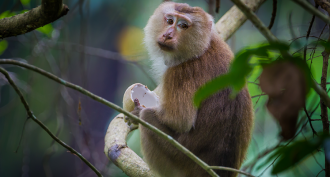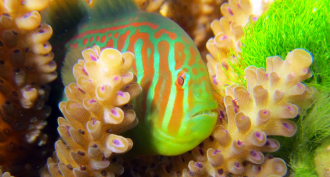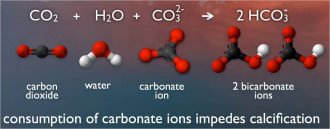
Stephen Ornes has been writing for Science News Explores since 2008, and his 2014 story "Where Will Lightning Strike?" won an AAAS/Kavli Gold Award. He lives in Nashville, Tenn., and he has three children, who are inventing their own language. His family has a cat, six chickens, and two rabbits, but he secretly thinks hagfish are the most fascinating animals. Stephen has written two books. One is a biography of mathematician Sophie Germain, who was born during the French Revolution. The other, which was published in 2019, features art inspired by math. Visit him online at stephenornes.com.

All Stories by Stephen Ornes
-
 Earth
EarthLess ice, more seawater
Shrinking ice sheets contribute to rising sea levels, large-scale study confirms.
-
 Planets
PlanetsIce on Mercury
MESSENGER spacecraft provides evidence for frozen water on planet closest to sun.
-

-

-
 Animals
AnimalsThreatened coral get fishy rescue
When toxic seaweed gets too close to this coral, gobies fight and bite back.
-
 Chemistry
ChemistryExplainer: Ocean acidification
Here’s why shellfish and other animals in the sea suffer when the ocean is forced to absorb too much carbon dioxide.
-

-
 Health & Medicine
Health & MedicineHealthier mice, through X-rays
In sickly mice, small doses of radiation helped while vitamins harmed.
-
 Tech
TechHow to stop a speeding bullet
Scientists take a close look at a plastic that has Superman’s ability to stop a speeding bullet.
-
 Space
SpaceTwinkle, twinkle oldest stars
Astronomers find traces of ancient light in the activity of bright, distant galaxies.
-
 Fossils
FossilsShoulder bones fuel debate
Fossil shoulder blades suggest an ancient humanlike species may have been at home in the trees as well as on the ground.
-
 Climate
ClimateEvolution of a Frankenstorm
Huge, late October hurricane turned into a superstorm that savaged much of the eastern United States.